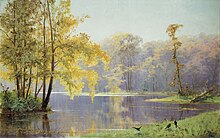Catherine Palace (Moscow)
55°45′39.78″N 37°41′46.49″E / 55.7610500°N 37.6962472°E

The Catherine Palace is a Neoclassical residence of Catherine II of Russia on the bank of the Yauza River in Lefortovo, Moscow. It should not be confused with the much more famous Catherine Palace in Tsarskoye Selo.
The residence is also known as the Golovin Palace, after its first owner, Count Fyodor Golovin, the first Chancellor of the Russian Empire. After his death Empress Anna commissioned Francesco Bartolomeo Rastrelli to replace the Golovin Palace with a Baroque residence known as Annenhof. This was Anna's preferred residence. It consisted of two wooden two-storey buildings, the Summer Palace and the Winter Palace.

Annenhof was abandoned after a fire in 1746. Catherine II, who found both edifices rather old-fashioned and dilapidated, ordered their demolition in the 1760s. After 1773 Karl Blank, Giacomo Quarenghi and Francesco Camporesi were the architects employed to supervise the construction of a Neoclassical residence in Lefortovo. Emperor Paul, known for his dislike of his mother's palaces, converted the residence into barracks.
After Napoleon's occupation of Moscow in 1812 the Catherine Palace was restored under the supervision of Osip Bove. It has since been occupied by the Moscow Cadet Corps, Malinovsky Tank Academy and other military institutions and has generally been inaccessible to the public at large. In October 1917 the Moscow cadets mounted a fierce resistance against the Bolsheviks in Lefortovo. What little remained of the Annenhof Park was largely destroyed by the 1904 Moscow tornado.


